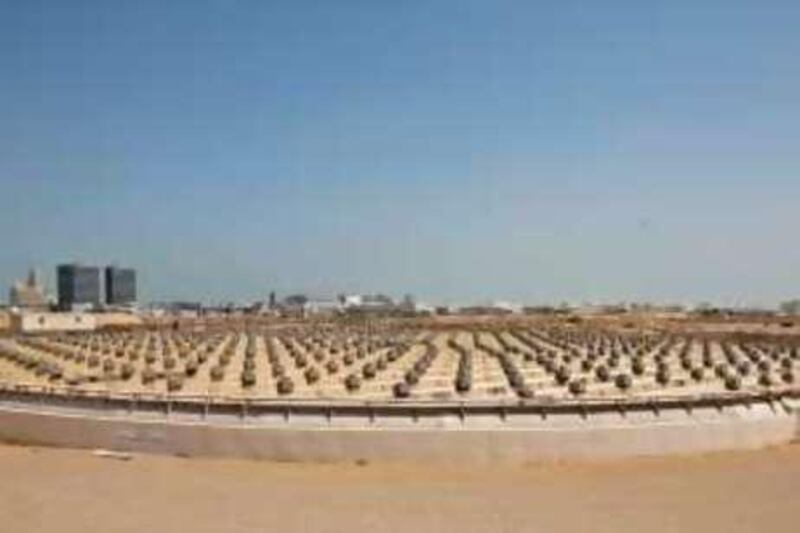ABU DHABI // If it worked on Mars, it should work here too. The technology that Nasa uses to clean solar panels on its Mars rovers could also, according to researchers at Boston University, be useful in desert environs such as the UAE. Prof Malay Mazumder, a professor of electrical and computer engineering who developed the technology, said that while the country might seem ideally suited for solar energy projects, experts have noted one hitch: dust and sand build up on the solar arrays.
A thin layer of fine dust - as little as 4 grams spread across one square metre of a panel - could reduce energy output by 40 per cent, according to Prof Mazumder. His solution? Self-cleaning solar panels that would not require any washing fluid. "The trick here is to apply electrostatic forces to the panel in such a way that the sand particles become charged," the computer and electrical engineering professor said in an interview from Boston.
"They get lifted up from the surface and whipped away." The technology would work on Earth as it works on Mars: using a special "electrodynamic screen", tiny dust particles are captured, charged and swept aside by an electrostatic wave switched on for several seconds. Prof Mark Horenstein, a colleague of Prof Mazumder's who is also working on the self-cleaning technology, said dust particles "would kind of be hopping and get dragged to the sides" before dropping off.
"We summarised the project this way: where do you want to build a solar panel? Where there is a lot of sun. Where is there a lot of sun? The desert. What is there not a lot of in the desert? Water, and there are copious amounts of dust," he said. The self-cleaning panels could save time and water. "Imagine you sent out a window washer to wash every panel, and maybe it's a gallon [of water] a panel," Prof Horenstein noted.
Prof Mazumder said: "I have a student in this campus who's from Dubai, and he had worked to clean solar panels [in the UAE] with water and chemicals to prevent streaks, and he said it's a very big mess." Shariar Faghfooli, the managing director of Gulf Solar Technologies in Jebel Ali, was intrigued by the professors' possibility. "It would be a good idea, absolutely," he said. But he added that "the biggest hurdle is lack of awareness. Solar energy has not been implemented enough here - not just the UAE, but in the whole region."
Mr Faghfooli also wondered about costs for retrofitting. "It could be expensive. Maybe the next generation of the panels would be more viable if the price drops." The target, Prof Horenstein said, was to build retrofittable screens for existing solar panels that would cost as little as US$10 to manufacture. He said that is a good deal because of the money that would be saved on maintenance over the long term.
@Email:mkwong@thenational.ae






